Farm to Market to Garden
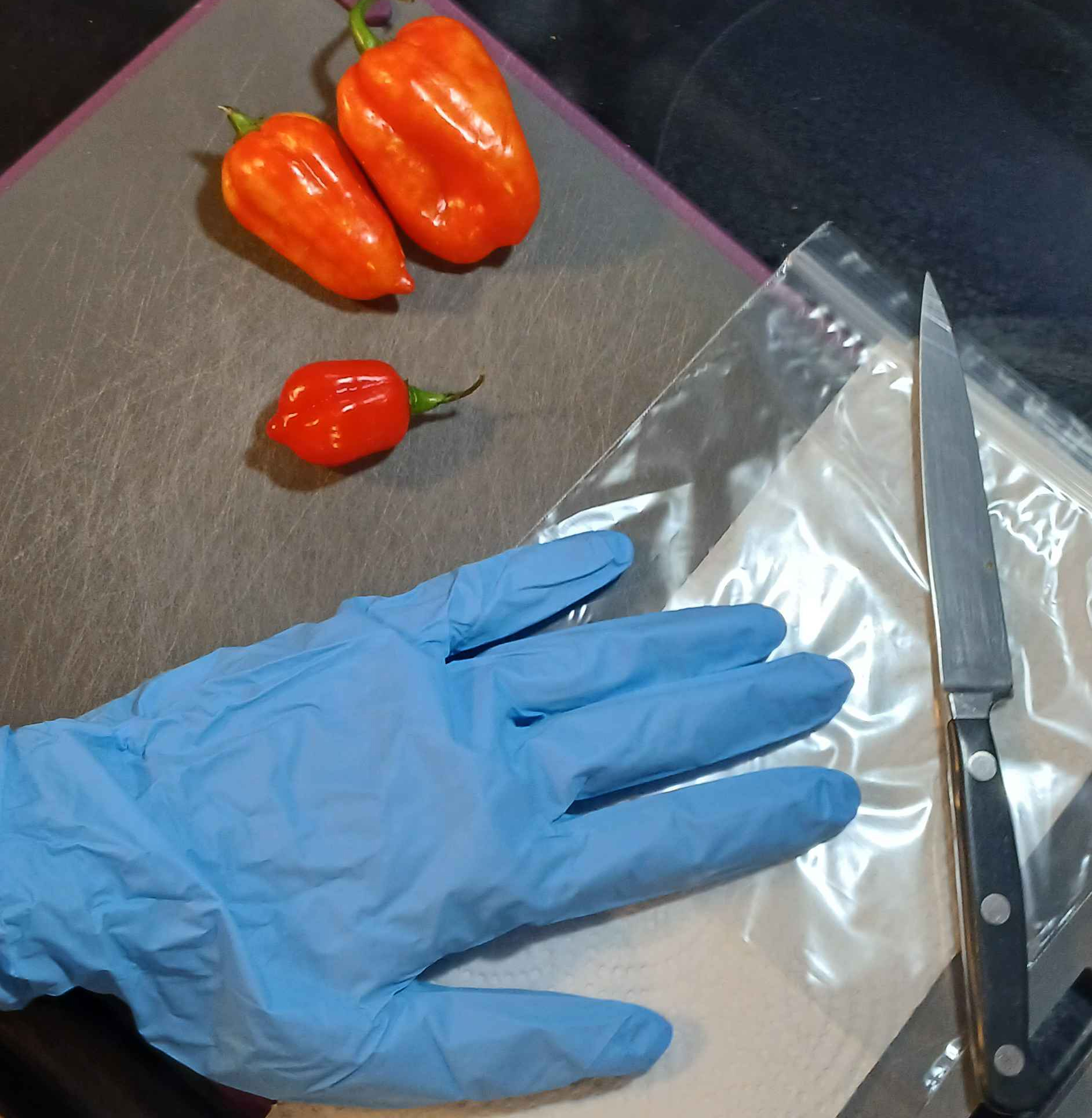
I’ve always had a penchance for getting grime under my fingernails. I’ve never really shied away from dirt although some of the denizens you unearth certainly have garnered a shrill yelp and a hushed curse on more than one occasion. Gardening is a hobby that I believe that everyone should participate in as the benefits are clear. You learn more about the world you inhabit, you provide clean nourishment for your family and depending on exactly what you’re seeking to grow it can be incredibly cost effective.
In a future post I’ll walk you through turning a small plot in your own yard into a small garden, but you can (and it may even be preferred) to build a small hydroponic system utilizing plastic totes so that you can garden indoors. I personally have been growing in a 7B zone with silty clay loam soil which has allowed me incredible yield on tomatoes and hot peppers in particular.
This post however will describe the simple process I’ve been utilizing to harvest and store pepper seeds long term for future seasons. The process for any seeded fruit or vegetable is theoretically the same although depending on the specific plant there may be some additional legwork required. Tomato seeds for example should be processed to remove the slimy coating prior to storage to prevent rot and mold. Hot peppers are simple and only require the seed to be removed from the flesh and pressed into paper towel and are stored in an air tight container in a dark temperature stable environment that ideally is cool. The better your storage environment the higher rate of germination you will experience over a longer period of time.
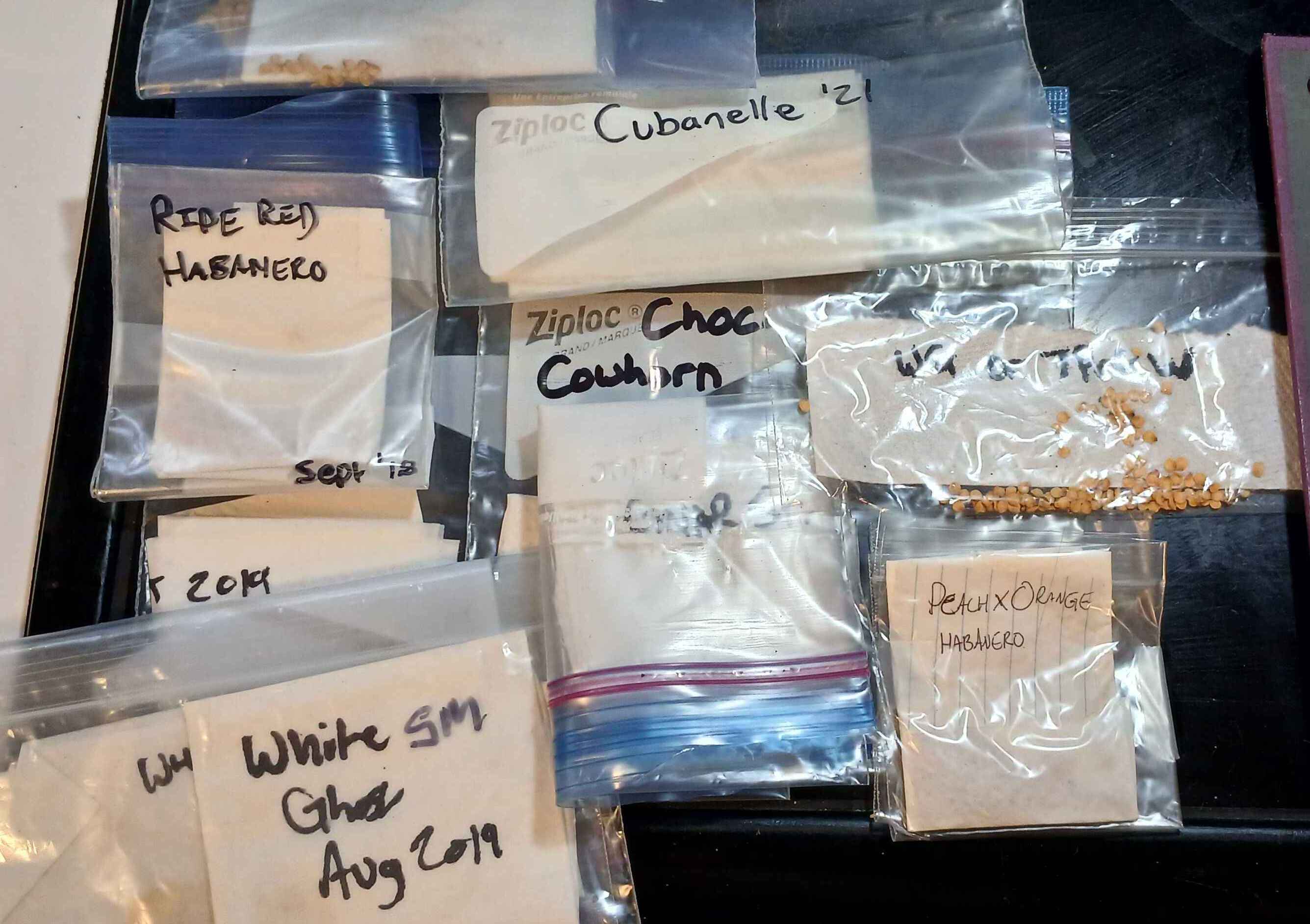
As you can see, I have seeds in my collection from 2018 that look as good as the day I put them in storage, although admittedly I have not tested the germination rate on these seeds yet. (That’s for another episode!)
One of the other reasons I recommend gardening as a hobby is that it can be a great source of community. Not only can you share your bounty but the genetics in the seeds of those fruit also bring people together through shared interest and history. In the bottom left corner of the above photo you can see a bag labeled, ‘White Ghost SM’ which you might think indicates perhaps a smaller fruit bearing variety but those are actually initials.
I received seeds from a gentleman named Sam Miller who posted on a hot pepper subreddit showing off an incredibly plump white ghost pepper plant that had been left to its own devices during hurricane season. Sam generously sent seeds from that plant out to many gardeners across the US and Canada. My first run at the variety produced a creamier yellow pod likely due to some crossbreeding or potentially simply unstable genetics. I’ve had them in storage ever since as I’m seeking another sheet white pepper to breed back into my open-pollinated seeds to reinforce the white flesh tones.
I generally enjoy my time at the grocers and in the supermarkets. In particular as a chaser of the red dragon, I always like to see what varietals of hot peppers are coming through labeled simply as “hot pepper mix” or “habanero” or “scotch bonnet” for unique phenotype expressions to add to my personal collection. As a personal endeavour I actually enjoy pepper breeding but I’ve not had much time or effort to direct to this hobby in the last few years but that is why proper storage is important.
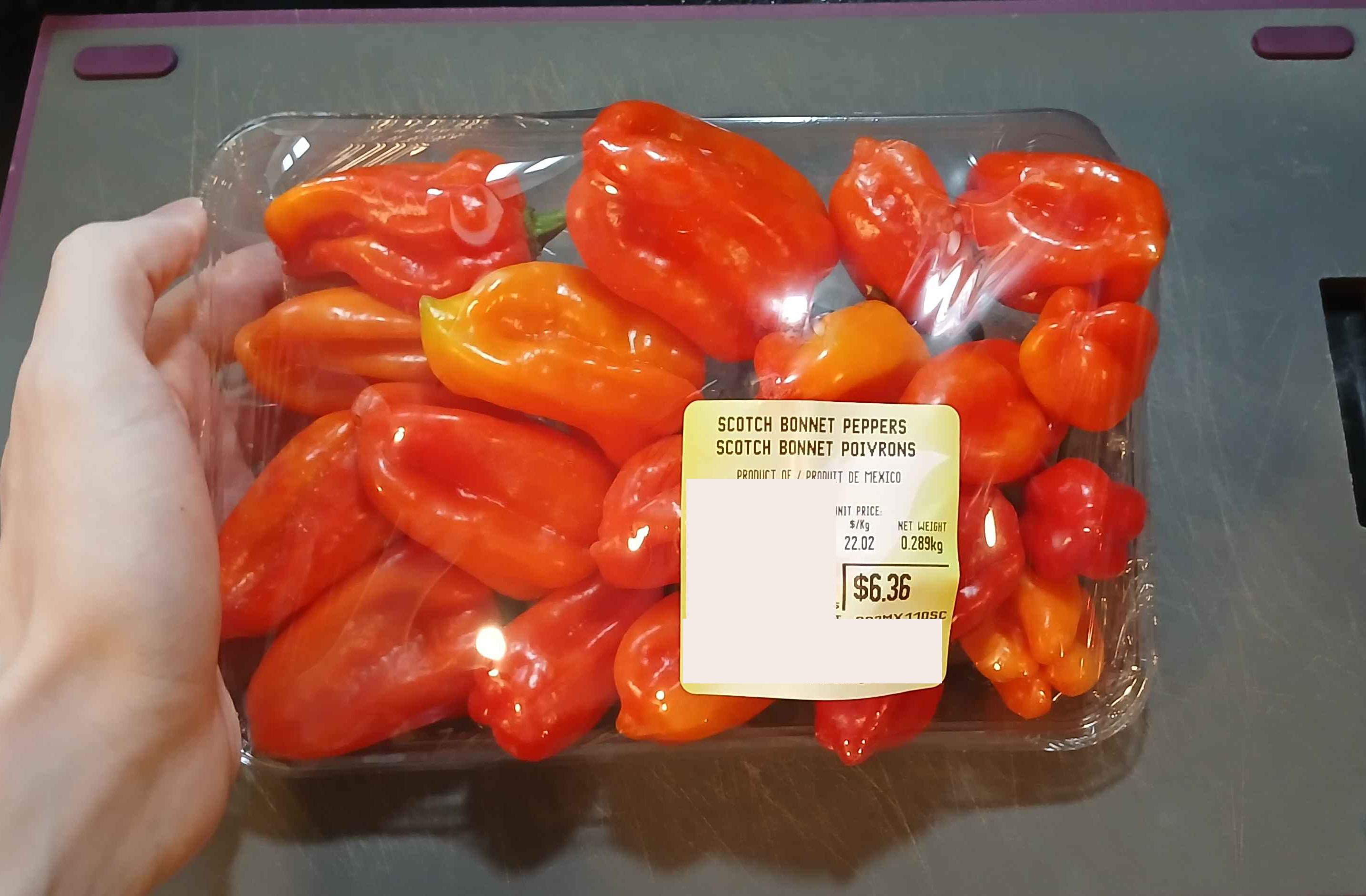
I picked this pack labeled ‘Scotch Bonnets’ up as there were a few very large pods and a couple that had an interesting ripening pattern. For under $7 CAD you have enough seeds to easily start your own pepper farm! I’m only going to be harvesting three pods here for their seeds and the rest I’ll process for use later.
Here are some of the observations I made of this 289g pack of peppers.
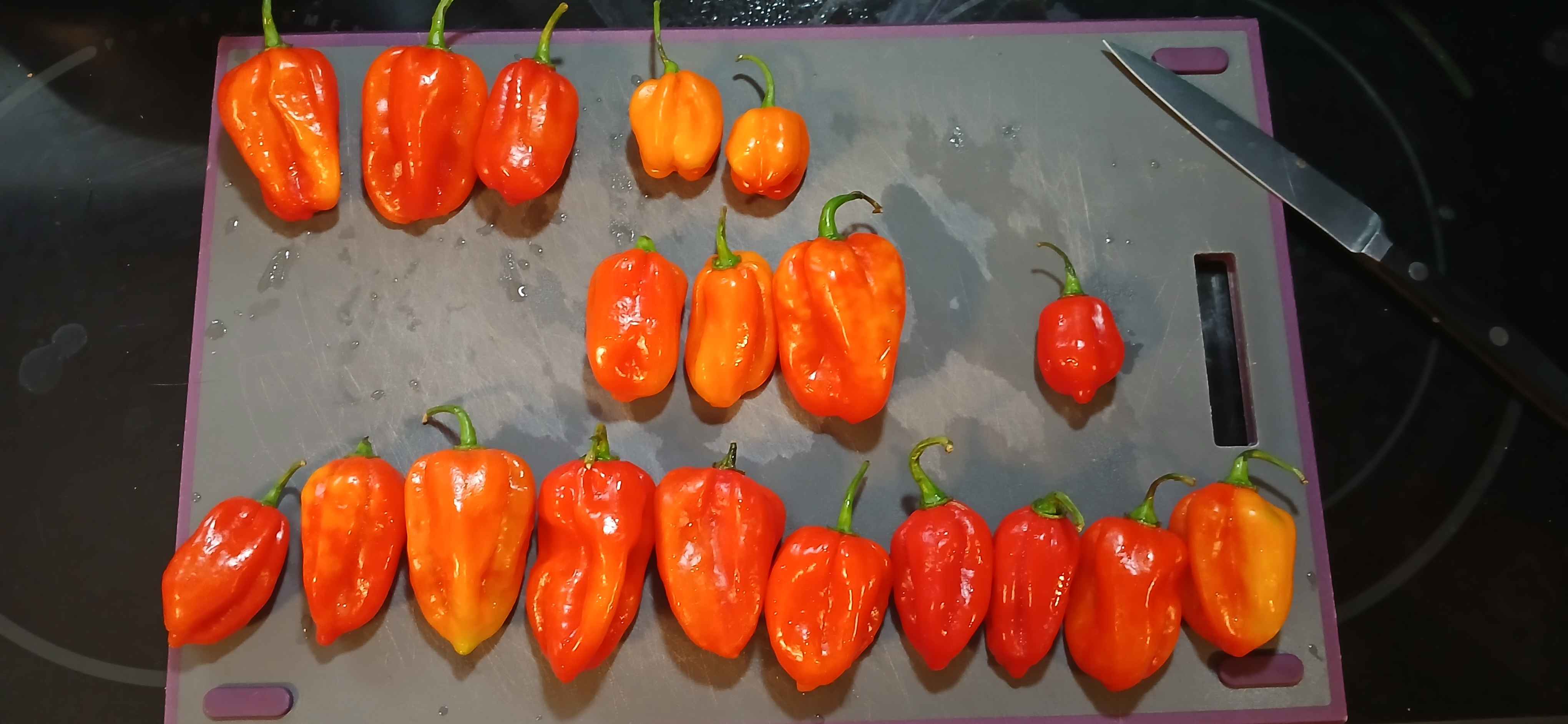
- More than half of the peppers terminated in a distinct rounded stinger like certain habanero or a traditionally shaped scotch bonnet.
- Atleast four of the peppers terminated in a collection of lobes more similar to most habanero, some scotch bonnets or similar to an annuum variety indicating a cross or at the very least unstable genetics.
- These and the other packs on the shelves had pods that were quite large for lobe terminating habaneros and traditionally shaped scotch bonnets.
- There were two distinct ripening patterns. A basic blush that spreads evenly across the fruit and a far more uneven blush that freckled the fruit like sunspots.
Personally I select for a few specific characteristics when it comes to identifying interesting genetics that I’d like to breed out. I’ll explore them in the order that I make the consideration as you move through harvesting and processing.
- Size & Shape Depending on the pepper I am selecting for, I may choose to prioritize one of these over the other. Larger peppers obviously produce more flesh and seed so they are generally more appreciated compared to more ornamental varieties like a NuMex or smaller culinary peppers like the Aji Charapita. You may also need to select for number of lobes to achieve a consistent shape and size.
- Color The color of a pepper doesn’t explicitly correlate to any flavor profile or spice level although of course there may be some misconceptions thanks to popular media. Ripe peppers are generally sweeter and more flavorful while unripe peppers tend to be, at least in my experience — far more aggressive in their assault. I would describe the flavor of unripe Trinidad Scorpion to be sour, acrid, and quite frankly rather unpleasant. I made a mash from the last of a seasons straggler pods that refused to ripen before last frost and that mash was entirely unpalatable for weeks. Not only did it have no discernable flavour the smell reminded me of the times I spent on the back of a garbage truck.
- Scent, Savour & Experience
Most often you will find that typically red, yellow and orange are the most common colors for a pepper to ripen to but that does not mean other colors don’t exist.
The other consideration to make regarding the color is the variation during the ripening process. Most frequently one section of fruit will begin to blush which spreads across the fruit until a uniform color is achieved. The color of a fruit is not generally determined by the level of light exposure although it is not uncommon for dark patches to appear on fruit experiencing high UV exposure.
We’ve had the opportunity to view the fruit of our labor at a distance for some time, now we’re afforded the opportunity to discern more intimate characteristics.
While I must admit I’ve never really stuck my schnoz in my pepper patch to see if the small flowers produce any remarkable odor, the ripe fruit on the other hand often come with an unmistakibly fruity floral fragrance that might just trick you into the worst decision you’ve made in recent memory. I also find that burgundy and darker flesh often associated with ‘chocolate’ varieties carry a deeper, heavier nose.
These chocolate varieties do well in barbeque, roasted or smoked as they are more pronounced and bold. Not that they aren’t also just as delicious in a sauce or eaten raw or pickled like the lighter toned fruits which have a more subtle profile that might be lost behind the spice.
Experience is a two part category. What was my experience like cooking with it, and eating it.
The experience of cooking is obviously subjective put primarily you’d be looking at ease of processing, so how easily it can be deseeded and pithed, and things like size my become a factor if you’re processing at volume by hand. Perhaps other factors might include how well it holds up to your preferred method of preparation.
While the experience of eating it also is rather subjective due to spice tolerance being a trainable trait — I’m primarily concerned with how the spice moves through the body. Especially as you move up the Scoville chart you really should be concerned with how you’re going to feel throughout the whole ordeal. I personally much prefer a pepper that will put up most if its fight in your mouth over other battlefields. You should probably be aware that the more of that battle you fight in your mouth the better so chew your hot peppers well!
I also try to select for spice that numbs the mouth or otherwise provides a more cerebral experience. What does that even mean? Well.. If you’re just punching air and fighting your demons than maybe you’re a little overwhelmed. There is, believe it or not — an ideal level of discomfort to achieve. It is almost a grounding experience as it becomes difficult to focus on anything other than the burning sensation. You become hyper aware of your skin as the sweat rolls over fine guard hairs. The sinus that you thought permanently closed for business after your cousin hit you with the People’s Elbow in 4th grade starts to leak and you simultaneously have never been able to breathe better and are actively drowning in your own humors. People are asking you if you’re okay and you can only just barely hear them over the din of your own heartbeat and blood as it rushes through your ears.
So once you’ve decided on some ideal characteristics and are ready to start growing your own little pain plant, what’s next?

Well you’ll need just a few mostly household items although you may need some unpowdered nitrile gloves. Can you do it without? Certainly, do I recommend it? Absolutely not!
If its hotter than a Cubanelle, glove up! Your hands have a LOT of cracks and crevices for which the oils can seep into and cause you an unworldly amount of discomfort which no amount of soap, oil or milk will relieve.
Aside from some PPE all you’ll need is a sharp knife, some clean paper towel, a ziploc bag and a marker or writing utensil.
The process is profoundly simple. I prefer to cut the stem end off and then run the knife down one edge fileting the pepper open. Holding the pepper open with the spine of the knife it’s a breeze to strip the seed from the placental wall if it cannot be removed as one solid mass. Spread it apart in the center of the towel which you should label with the year and identifier before folding over itself and sealing in the zip bag.
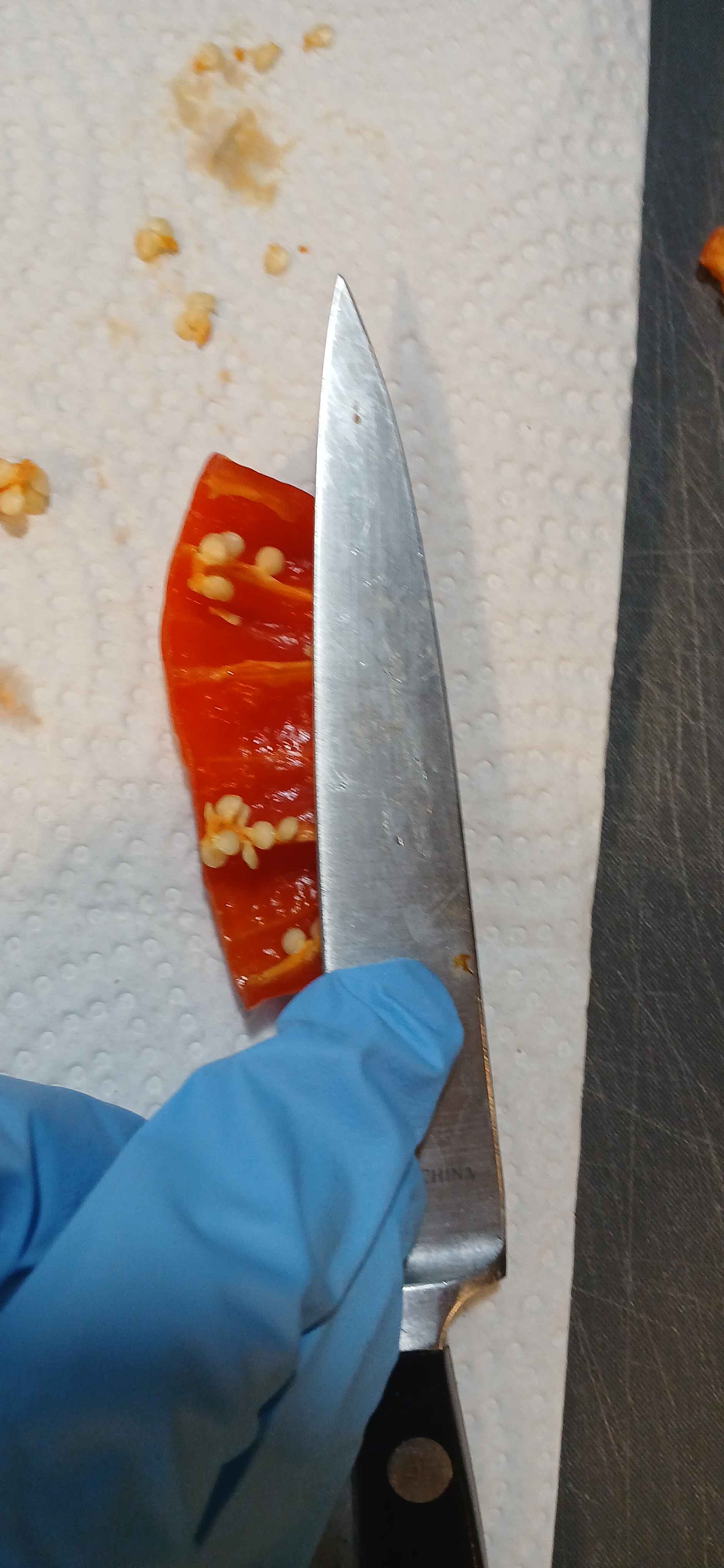
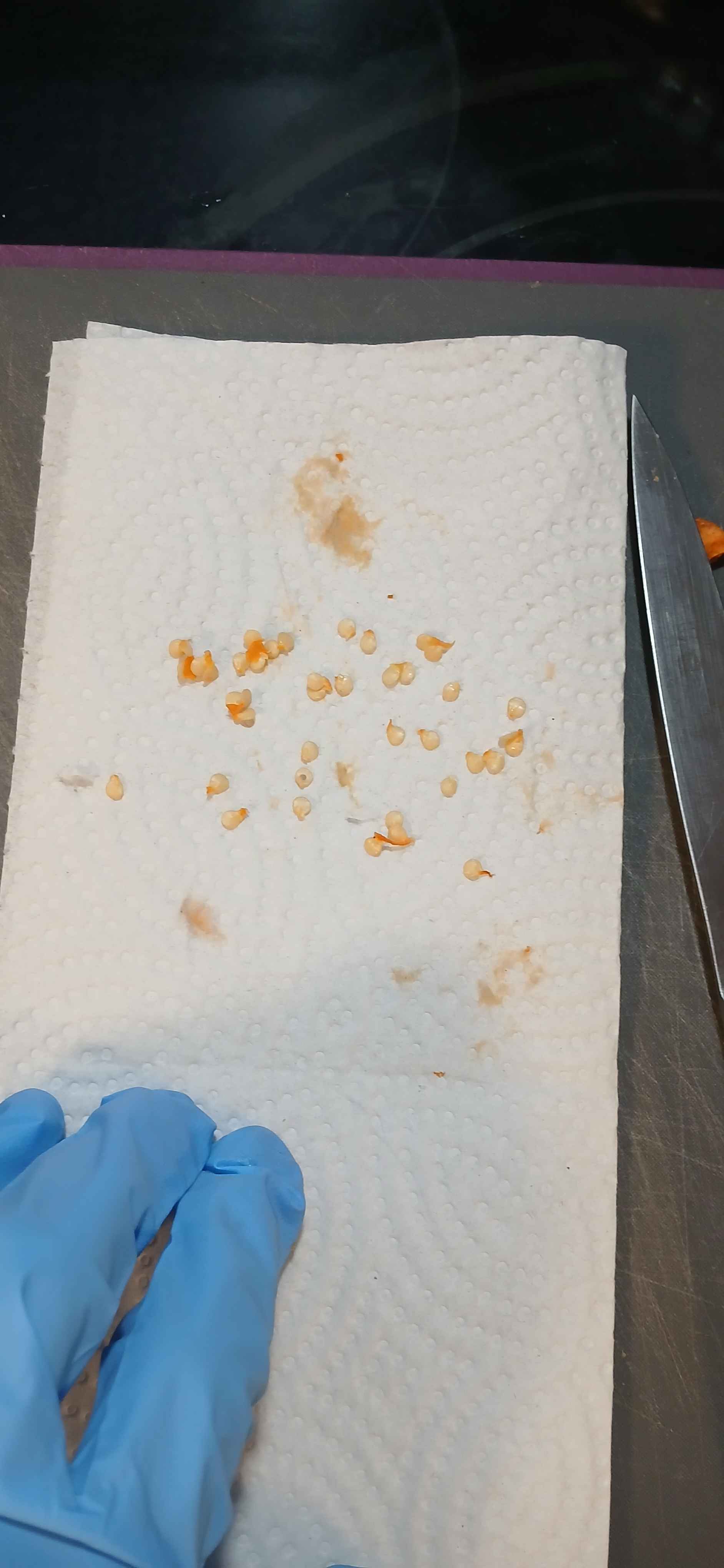
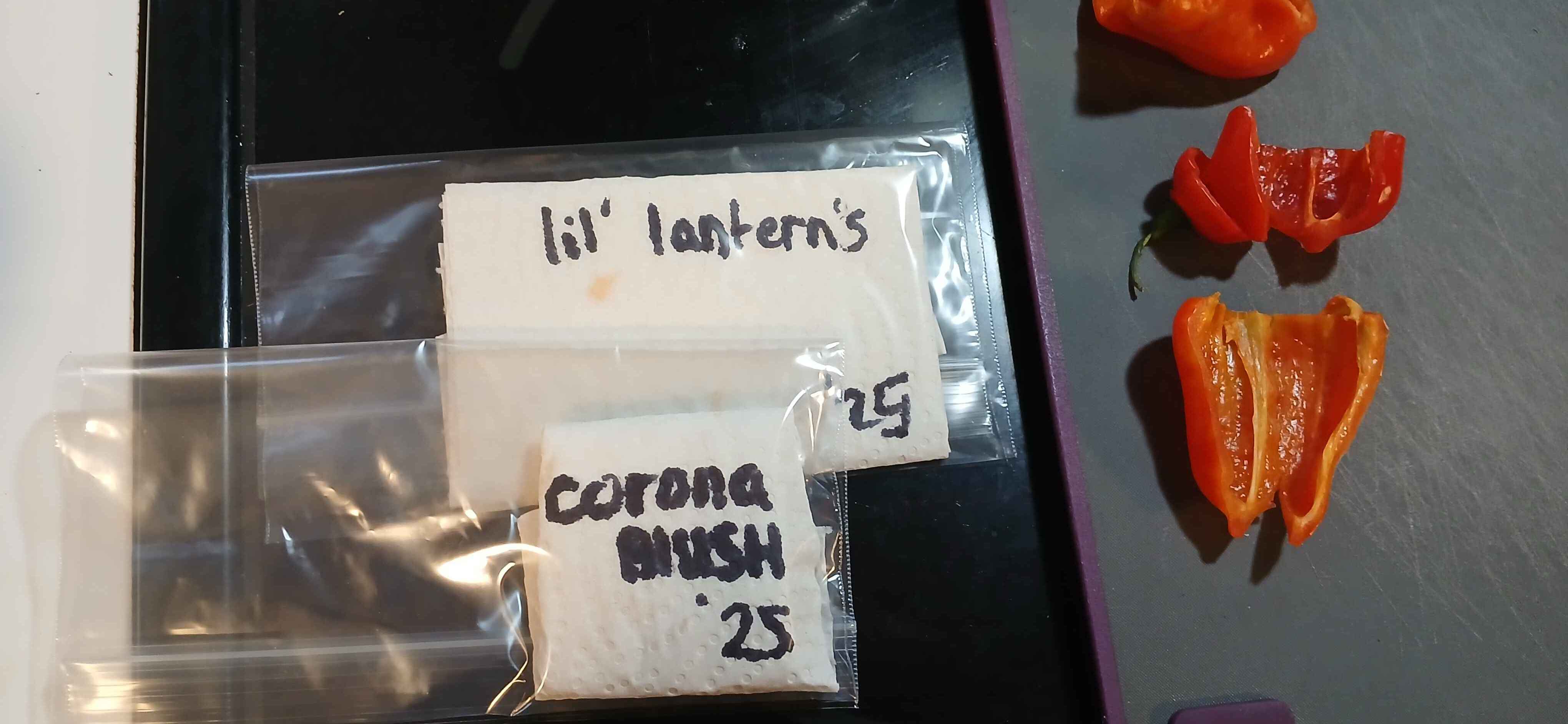
And just like that I’ve got some seeds ready to go for later this year and if you head out to your local supermarket you can too! I ended up chopping these up into some ground beef and make some burgers but you can do a lot with a little. If you’re not too certain what to do with hot peppers I think the easiest approaches are either to dry them out in a slightly open oven on its lowest setting and powderize them or stuff them into a heat-resistant container and pour over hot vinegar and it makes a great spicy vinegar for potatoes, greens, and more!
I hope you find the inspiration to go plant something in you backyard, on your patio or wherever else you may have a few square feet of space this year!